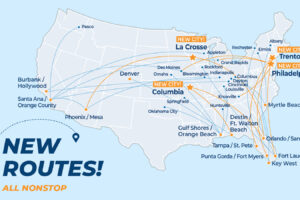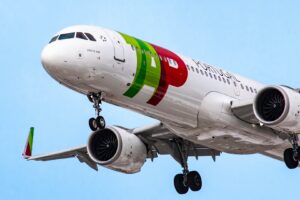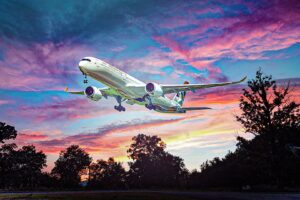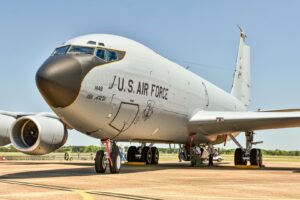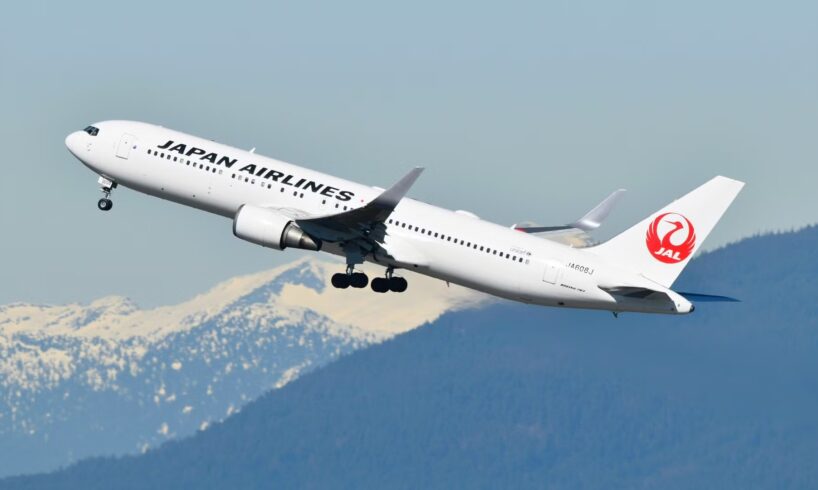
Japan Airlines has clarified the extensive fleet transformation that it will be undertaking through to 2030. In its annual report published on October 1, the carrier provides extensive detail on its plans for both its domestic and international fleets, including a significant reduction of widebodies on domestic routes. It also indicates a strong shift towards more fuel-efficient, next-generation aircraft by the end of the decade.
Also contained within the report, Japan Airlines says that it is currently considering replacements for its regional aircraft fleet. The airline operates multiple aircraft types via four regional subsidiaries, and there are substantial opportunities for efficiency and cost savings via standardization. Although not specifically called out, this might even include aircraft from its partnership with hybrid-electric startup MAEVE Aerospace.
Transformation Of International And Domestic Fleets
On the international front, Japan Airlines says that it will be expanding its long-haul route network by as much as 50% by 2030, while “focusing on North America and Asia”. To accommodate this, the carrier signed an order for an additional 20 Airbus A350-900s at the Farnborough Airshow last year. It has been using the type to replace its Boeing 777 fleet, but these additional aircraft will cater for the new international growth as well.
Domestically, Japan Airlines is awaiting a total of 38 Boeing 737 MAX 8s after it added an order for an additional 17 frames earlier this year. These will be used as a straight swap to replace its existing 737-800s, with deliveries set to begin next year. The report also highlights that the carrier will be decreasing its usage of widebodies on domestic routes. They currently account for nearly half of all seats flown, but narrowbodies will increase over the next few years to become two-thirds of domestic capacity by 2030.
A key driver for Japan Airlines’ fleet renewal is greater fuel-efficiency and moving closer to its 2050 carbon-neutral goals. The report highlights that over the next five years, the percentage of next generation aircraft in the fleet will increase from its current 45% to 73% in 2030. Mitsuko Tottori, president of Japan Airlines, emphasized this in the reporting:
“The next generation aircraft being introduced to the fleet are low-noise and fuel-efficient, capable of providing CO₂ emissions reductions of 15–25% compared to the current aircraft that we operate.”
The Specific Fleet Adjustments
Japan Airlines operates a mainline fleet of 150 aircraft across five variants, which will be consolidated down to four variants over the coming years. Its oldest aircraft are its Boeing 767 and 777 widebodies, with both types being systematically retired and replaced.
Japan Airlines’ Mainline Fleet Transformation
Aircraft Type
Number In Service
Average Age (Years)
Outstanding Orders
A321neo
–
–
11
A350-900/1000
26
3.3
25
737-800
42
15.7
–
737 MAX 8
–
–
38
767-300ER
27
18.3
–
777-300ER
10
18.0
–
787-8/9
45
9.0
10
Total
150
12.2
84
The airline has operated 46 Boeing 777s over the years, but is now down to its last ten 777-300ERs. They are being replaced by the Airbus A350, with Japan Airlines operating 16 A350-900s and 10 A350-1000s. The two different variants are employed for very different missions:
A350-1000: The -1000s are replacing the 777-300ERs directly, and are utilized exclusively on long-haul routes to London, Paris, New York, Los Angeles, and Dallas-Fort Worth. The airline still has three of the type on order,
A350-900: These are currently used exclusively on high-capacity domestic routes, such as Tokyo-Sapporo and Tokyo-Fukuoka, which both have up to ten A350-900 return flights a day. The airline has two more domestic -900s to be delivered (including a replacement for the aircraft lost in the crash of JAL 516) and then will take delivery of 20 internationally-configured A350-900s from 2027 to aid in its international long-haul expansion.
Japan Airlines was also once one of the largest operators of the Boeing 767, having flown 60 of the type over the years. While 27 remain in the fleet, these are also being phased out over the next few years. Interestingly, while the 767s configured for international assignments are being replaced by the airline’s growing 787 fleet, the domestic 767s are being replaced by A321neos. These are Japan Airlines’ first Airbus narrowbodies, and deliveries are set to commence in 2028.
Consolidation Of The Regional Fleet
The Japan Airlines report says that it will “also decide on the successor aircraft types for the domestic regional jet fleet, keeping an eye on future demand trends.” The airline currently has four subsidiaries operating regional jets and turboprops, with five different types in service:
J Air is Japan Airlines’ largest regional operator, with bases at Fukuoka, Kagoshima, Osaka-Itami and Sapporo-Chitose. It operates 32 regional jets, made up of 18 Embraer E170s and 14 Embraer E190s.
Japan Air Commuter uses 11 ATR 42 and 72 aircraft to operate regional flights throughout Japan’s southern islands from its base in Kagoshima.
Hokkaido Air System uses four ATR 42s to operate regional flights to remote northern towns and islands from its Sapporo base.
Ryukyu Air Commuter provides domestic passenger services from the island of Okinawa to other islands of Okinawa Prefecture and the Amami Islands using De Havilland Dash 8 Q400 combis.
Japan Airlines might choose to consolidate these into one or two families of regional aircraft, likely choosing the Embraer E2 series (as ANA did earlier this year) and ATRs. However, a wildcard option for the future regional fleet might be Maeve Aerospace. Japan Airlines and Delta Air Lines are both partnering with the Dutch-based manufacturer on the development of a revolutionary hybrid electric aircraft for regional flights. Using open-rotor engines, the proposed MJ500 would seat 75–100 passengers, and deliver 40% fuel savings over current technologies.

